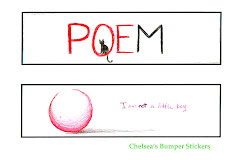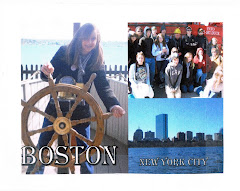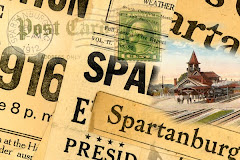
You are still in New York City, New York, on the literary map.
Visit Marianne Moore at www.Poets.org and fill-in-the-blanks.
"Born near St. Louis, Missouri, on ____________________, Marianne Moore was raised in the home of her grandfather, a ___________________ pastor. After her grandfather's death, in 1894, Moore and her family stayed with other relatives, and in 1896 they moved to Carlisle, Pennsylvania. She attended Bryn Mawr College and received her B.A. in 1909. Following graduation, Moore studied typing at Carlisle Commercial College, and from 1911 to 1915 she was employed as a school teacher at the _________________. In 1918, Moore and her mother moved to ______________, and in ____________, she became an assistant at the New York Public Library. She began to meet other poets, such as _________________ and __________________, and to contribute to the Dial, a prestigious ______________. She served as acting editor of the Dial from 1925 to 1929. Along with the work of such other members of the Imagist movement as Ezra Pound, Williams, and H. D., Moore's poems were published in the Egoist, an English magazine, beginning in 1915. In 1921, ____ published Moore's first book, Poems, ________________________."
"Moore was widely recognized for her work; among her many honors were the Bollingen prize, the ___________, and the _________________. She wrote with the freedom characteristic of the other _____________ poets, often incorporating quotes from other sources into the text, yet her use of language was always extraordinarily ___________ and precise, capable of suggesting a _____________ of ideas and associations within a single, compact image. In his 1925 essay 'Marianne Moore,' William Carlos Williams wrote about Moore's signature mode, the vastness of the particular: 'So that in looking at some apparently small object, one feels the swirl of great events.'"
"She was particularly fond of __________, and much of her imagery is drawn from the _______________. She was also a great fan of __________________________ and an admirer of ______________, for whom she wrote the liner notes to his record, I Am the Greatest! Deeply attached to her mother, she lived with her until Mrs. Moore's death in 1947. Marianne Moore died in New York City in ______."
Read “Baseball and Writing.”
Read “Poetry.” Answer the following questions.
Marianne Moore may surprise us by saying that she dislikes poetry. What is implied by her declaration that it is “fiddle”?
How is poetry related to “high-sounding interpretation”?
When is poetry most unlikeable?
In lines 4-5, the poet describes physical reactions to excitement. In what way do these reactions indicate “the genuine” in poetry?
Moore says that poets should be “literalists of the imagination.” One meaning of the word “literal” is “true to fact.” How close to the literal are the things listed in lines 11-15?
What aspects of poetry are suggested by the phrase “real toads”?
What does Moore think true poetry should be?
Marianne Moore has been called a master of the “light rhyme,” rhyme that is not obvious but that enhances the poem’s musical effect. What two light rhymes do you find in stanza one?
Find other light rhymes in the poem.
Visit Marianne Moore at www.Poets.org and fill-in-the-blanks.
"Born near St. Louis, Missouri, on ____________________, Marianne Moore was raised in the home of her grandfather, a ___________________ pastor. After her grandfather's death, in 1894, Moore and her family stayed with other relatives, and in 1896 they moved to Carlisle, Pennsylvania. She attended Bryn Mawr College and received her B.A. in 1909. Following graduation, Moore studied typing at Carlisle Commercial College, and from 1911 to 1915 she was employed as a school teacher at the _________________. In 1918, Moore and her mother moved to ______________, and in ____________, she became an assistant at the New York Public Library. She began to meet other poets, such as _________________ and __________________, and to contribute to the Dial, a prestigious ______________. She served as acting editor of the Dial from 1925 to 1929. Along with the work of such other members of the Imagist movement as Ezra Pound, Williams, and H. D., Moore's poems were published in the Egoist, an English magazine, beginning in 1915. In 1921, ____ published Moore's first book, Poems, ________________________."
"Moore was widely recognized for her work; among her many honors were the Bollingen prize, the ___________, and the _________________. She wrote with the freedom characteristic of the other _____________ poets, often incorporating quotes from other sources into the text, yet her use of language was always extraordinarily ___________ and precise, capable of suggesting a _____________ of ideas and associations within a single, compact image. In his 1925 essay 'Marianne Moore,' William Carlos Williams wrote about Moore's signature mode, the vastness of the particular: 'So that in looking at some apparently small object, one feels the swirl of great events.'"
"She was particularly fond of __________, and much of her imagery is drawn from the _______________. She was also a great fan of __________________________ and an admirer of ______________, for whom she wrote the liner notes to his record, I Am the Greatest! Deeply attached to her mother, she lived with her until Mrs. Moore's death in 1947. Marianne Moore died in New York City in ______."
Read “Baseball and Writing.”
Read “Poetry.” Answer the following questions.
Marianne Moore may surprise us by saying that she dislikes poetry. What is implied by her declaration that it is “fiddle”?
How is poetry related to “high-sounding interpretation”?
When is poetry most unlikeable?
In lines 4-5, the poet describes physical reactions to excitement. In what way do these reactions indicate “the genuine” in poetry?
Moore says that poets should be “literalists of the imagination.” One meaning of the word “literal” is “true to fact.” How close to the literal are the things listed in lines 11-15?
What aspects of poetry are suggested by the phrase “real toads”?
What does Moore think true poetry should be?
Marianne Moore has been called a master of the “light rhyme,” rhyme that is not obvious but that enhances the poem’s musical effect. What two light rhymes do you find in stanza one?
Find other light rhymes in the poem.



















